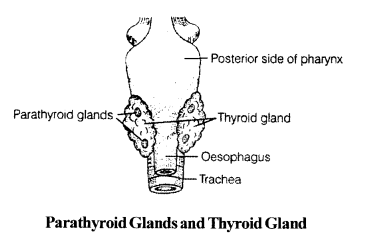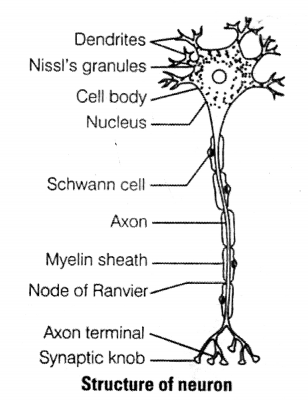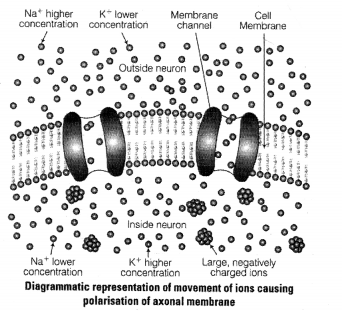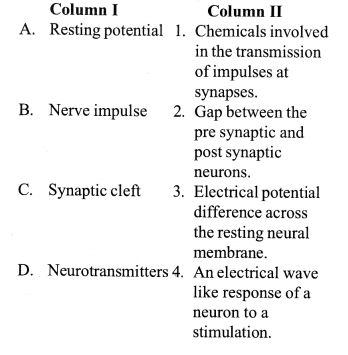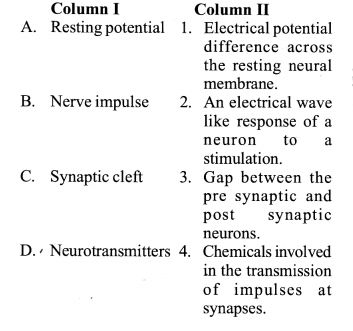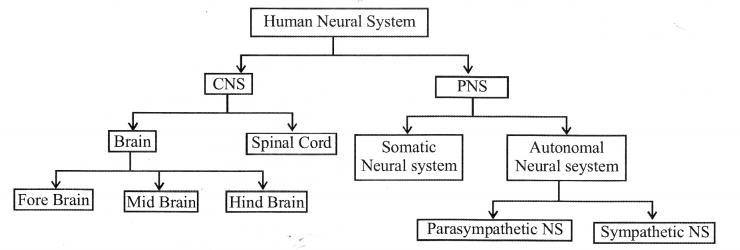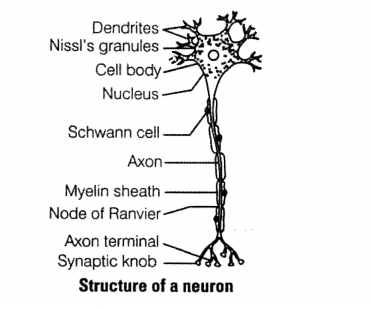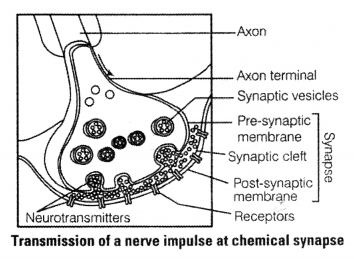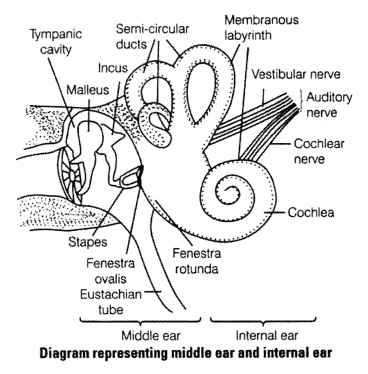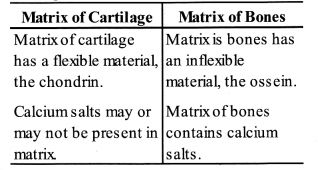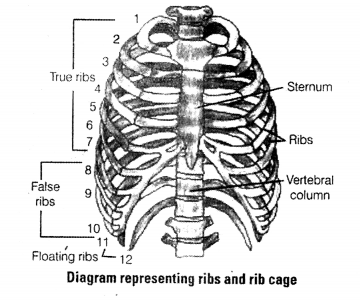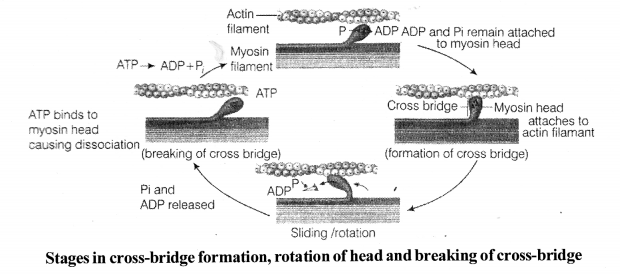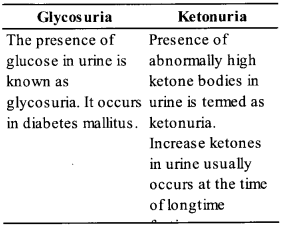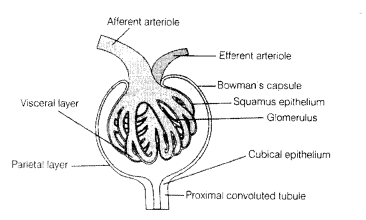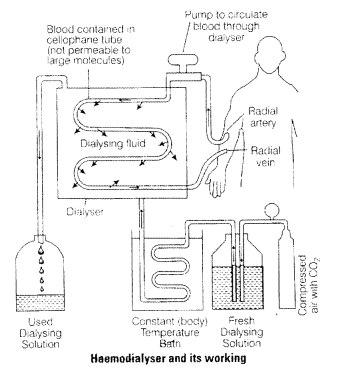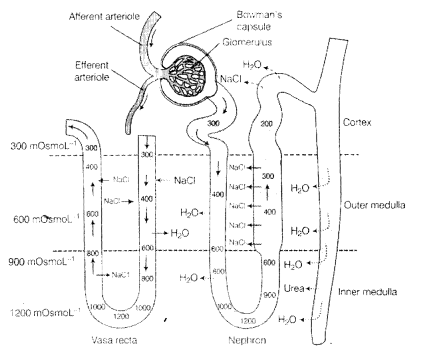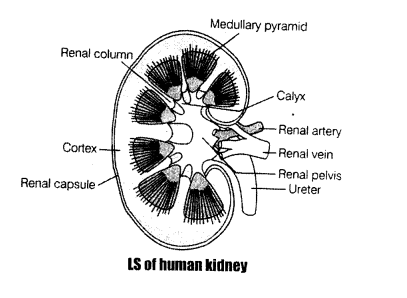Here we are providing The Portrait of a Lady Important Extra Questions and Answers Class 11 English Hornbill, Extra Questions for Class 11 English was designed by subject expert teachers.
The Portrait of a Lady Important Extra Questions and Answers Class 11 English Hornbill
The Portrait of a Lady Extra Questions and Answers Short Answer Type
Question 1.
Why was it hard for the author to believe that the grandmother was once young and pretty?
Answer:
It was difficult for the author to believe that his grandmother was once young and pretty. In fact, the thought was almost revolting. He had seen her old for the last twenty years. He felt she could age no further. The very thought of her playing games as a child seemed quite absurd and undignified.
Question 2.
The grandmother has been portrayed as a very religious lady. What details in the story create this impression?
Answer:
The author recalls his grandmother as a very religious woman. He remembers her hobbling about the house, telling the beads of her rosary. He recalls her morning prayers and her reading scriptures inside the temple. The author recounts how, during the last few days, she spent all her time praying.
Question 3.
The grandmother had a divine beauty. How does the author bring it out?
Answer:
The grandmother was not pretty but had a divine beauty. She dressed in spotless white. Her silver locks were scattered untidily over her pale, puckered face, and her lips constantly moved in an inaudible prayer. The author describes her “like the winter landscape in the mountains”a personification of “serenity, breathing peace and contentment.”
Question 4.
What proofs do you find of friendship between the grandmother and grandson in the story?
Answer:
The grandmother and grandson were good friends. She got him ready and walked him to and back from school. In the city, they shared a common bedroom. The author’s grandmother saw him off, silently, but kissing him on his forehead, when he went abroad and celebrated his return five years later.
Question 5.
The grandmother was a kind-hearted woman. Give examples in support of your answer.
Answer:
The grandmother was a kind-hearted woman. On her way back from school, she would feed the village dogs with stale chapattis. In the city, when she could not move out, she took to feeding sparrows that came and perched on her legs, shoulders, and head.
Question 6.
“This was the turning point in our friendship.” What was the turning point?
Answer:
The turning point in the friendship arrived when they shifted to the city. They saw less of each other as she could neither accompany him to school, nor understand English. She did not believe in science. She could not keep pace with the author’s modem education that he received in the city school.
Question 7.
Draw a comparison between the author’s village school education and city school education.
Answer:
The village school was attached to a temple and the students were taught the alphabet and morning prayers. The author and his grandmother walked to the school in the village. However, in the city he went by the school bus. He was taught science and English but not taught about god. He was also taught music.
Question 8.
What was the happiest moment of the day for the grandmother?
Answer:
The happiest moment of the day for the grandmother in the city was when she was feeding the sparrows. They perched on her legs, shoulders, and head but she never shooed them away.
Question 9.
What was ‘the last sign’ of physical contact between the author and the grandmother? Why did the author think that to be the last physical contact?
Answer:
The author was going abroad for five years. His grandmother kissed his forehead. He presumed this as the last sign of physical contact between them. He feared that she would not survive till he returned since he was going away for five years.
Question 10.
Everybody including the sparrows mourned the grandmother’s death. Elaborate.
Answer:
When the grandmother died, thousands of sparrows collected and sat in the courtyard. There was no chirruping. When the author’s mother threw some breadcrumbs for them, they took no notice of the breadcrumbs. They were full of grief at her death and flew away quietly after the cremation.
Question 11.
Describe the author’s grandfather as he looked in his portrait.
Answer:
In the portrait, the grandfather was dressed in a big turban and loose-fitting clothes. His long white beard covered the best part of his chest and he looked at least a hundred years old. He looked grandfatherly to the author; someone who could never have been young.
Question 12.
How does the author describe his grandmother?
Answer:
The author describes his grandmother as short, old, fat and slightly bent. To him, she looked the same for twenty years. It was difficult for him to imagine her young and pretty. But he found a beauty in her old age, like the serene winter landscape.
Question 13.
How does the author react to the idea of the grandmother being young at a point of time and playing games?
Answer:
The author could not conceive his grandmother as young and pretty, and playing games as a little girl. To him, it was like one of the myths and fables she told him.
Question 14.
How did the grandmother prepare the author for going to school?
Answer:
The grandmother woke him up each morning, bathed him, dressed him and got him ready for school. There after, she plastered his wooden slate, gave him breakfast and walked him to school. While the author sat in the veranda learning the alphabet and morning prayers, the grandmother sat inside the temple reading scriptures.
Question 15.
Why was the grandmother distressed by the education imparted in the city school?
Answer:
The grandmother disapproved of the author’s education in the English school; they were taught science. She could not understand English and did not believe in science. It made her unhappy that they were not taught about god. The music lessons in school made her unhappier as she felt it was not meant for the gentle folk.
Question 16.
How did the grandmother react to the fact that the author was being given music lessons? Why?
Answer:
The grandson’s learning music in school made her unhappy as she felt it was not meant for the gentle folk. For her, music had associations with beggars and harlots. She almost stopped speaking to the author.
Question 17.
The grandmother’s reception and send off of her grandson were very touching. Comment.
Answer:
When the writer went abroad, the grandmother saw him off at the railway station, silently praying and telling her beads, and she kissed his forehead. When he returned, she expressed her joy by collecting women from the neighbourhood, beating the drum and singing for hours of the homecoming of warriors. For the first time she missed her prayers.
Question 18.
When the grandmother was taken ill, how were her views different from the doctor’s?
Answer:
When the grandmother was taken ill, the doctor felt it was mild fever and would go. But the grandmother thought differently. She felt her end was near. She refused to waste any more time talking instead of spending it in prayers as she sensed that only a few hours remained before her life came to an end.
Question 19.
When people are pious and good, even nature mourns their death. Justify.
Answer:
When the grandmother died, the sparrows, along with the writer’s family, mourned her death. Thousands of sparrows came and sat quietly all around her dead body. The writer’s mother threw breadcrumbs but the sparrows took no notice of them. After her cremation they flew without touching the crumbs.
Question 20.
How did the grandmother spend her day in the city?
Answer:
The grandmother spent her day from sunrise to sunset at her spinning wheel. She sat spinning and reciting her prayers. It was only in the afternoon that she relaxed for a while to feed the sparrows.
The Portrait of a Lady Extra Questions and Answers Long Answer Type
Question 1.
Elaborate on the beautiful bond of love and friendship between the author and his grandmother.
Answer:
When the author was still young, his parents left for the city leaving him to the care of his grandmother. They were good friends. She woke him up each morning, bathed him, dressed him, plastered his wooden slate, gave him breakfast and walked him to school. While he sat in the veranda learning, the grandmother sat inside the temple reading scriptures.
When they settled in the city, they shared a common bedroom. When the writer was going abroad, she went to the railway station to see him off but did not speak a word, only kissed his forehead. The writer cherished this as their last physical contact as he was going away for five years. But his grandmother was there to receive him back. In the evening, she collected women from the neighbourhood and beat the drum and sang for hours of the homecoming of the warriors. For the first time she missed her prayers.
Question 2.
The grandmother was not pretty but beautiful. How?
Answer:
The grandmother was short, old, fat and slightly bent. For the last twenty years she looked the same and to the author she seemed too old to age further. It was difficult for him to imagine that she could have been young and pretty. But to him, she was beautiful in a pristine and peaceful way. He remembered her telling the beads of her rosary, untiringly.
Her silver locks lay scattered untidily over her pale, puckered face, and her lips constantly moved in an inaudible prayer. She was like the winter landscape in the mountains, serene and content.
Question 3.
Discuss the relevance of the title ‘The Portrait of a Lady’.
Answer:
Khushwant Singh draws a heart-warming pen-portrait of his grandmother whom he loved and admired. Though not pretty, she was beautiful to the author’s perception. Telling the beads of her rosary while her lips constantly moved in an inaudible prayer, she was like the winter landscape in the mountains serene and content. She shared a special relationship with the author.
She got him ready and walked him to and from school. White he sat in the veranda learning, his grandmother sat inside the temple reading scriptures. The writer recounts his memories of his grandmother when he went abroad and how on his return she collected women from the neighbourhood and beat the drum and sang for hours of the homecoming of the warriors.
For the first time, she missed her prayers. She was a pious soul, who cared for the family, and even dogs and sparrows; her death was mourned by all including the sparrows. The writer, through his portrayal, makes the old lady endearing and unforgettable.
Question 4.
From a foster mother in the village to a lonely old lady in the city describe the grandmother’s journey through the later part of her life.
Answer:
When Khushwant Singh was still young, his parents left for the city leaving him to the care of his grandmother. They were good friends. His grandmother tended to him, got him ready and walked him to . school. While Khushwant Singh and the other children sat in the school’s veranda, learning, his grandmother sat inside the attached temple, reading scriptures.
In the city, their friendship underwent a change. The only thing that remained unchanged was their common bedroom. She could not accompany him to school as he went by the school bus. His grandmother did not understand or approve of his ‘city education’ and their communication deteriorated further. Later, when he went to the university, he got a separate room and this severed their bond further. She then spent her day from sunrise to sunset at her spinning wheel. She sat spinning and reciting her prayers. It was only in the afternoon that she relaxed for a while to feed the sparrows.
Question 5.
Write a character sketch of the author’s grandmother using the following words: affectionate, caring, kind and benevolent, religious, a strong woman.
Answer:
The author’s grandmother was not pretty but to the author she was a beautiful woman an embodiment of serenity and contentment. She was a pious and a religious lady who was always telling beads of her rosary and her lips constantly moved in inaudible prayer. She was an affectionate and a caring woman. She shared a special relationship with the author.
She woke him up each morning, bathed him, dressed him, plastered his wooden slate, gave him breakfast and walked him to school. Her kindness and benevolence extended to the dogs and sparrows as well, whom she fed dutifully. She was a strong woman, who did not show any emotion when the author was going abroad but when he returned, she collected women from the neighbourhood and beat the drum and sang for hours of the homecoming of warriors.
Question 6.
The grandmother herself was not formally educated but was serious about the author’s education. How does the text support this?
Answer:
The grandmother was not formally educated but was serious about the author’s education. She could read the scriptures. She realized the value of education and did not let the author miss school. She woke him up each morning, bathed him, dressed him, plastered his wooden slate, gave him breakfast and walked him to school where he was taught the alphabet and morning prayers. While he sat in the veranda learning, the grandmother read her scriptures.
In the city, she could not accompany him to school as he went by the school bus. He was now in an English school, where they taught science. She could not understand English and did not believe in science. The fact that they were not taught about god made her unhappy. Khushwant Singh’s music lessons in school upset her over its lewd associations. She took an interest in the author’s education.
Question 7.
Gradually the author and the grandmother saw less of each other and their friendship was broken. Was the distancing deliberate or due to
the demands of the situation?
Answer:
When the author was a young boy, his parents shifted to the city leaving him with his grandmother. They were good friends. She was with him through the day and even accompanied him to and from school.
But when his parents had settled in the city, they sent for them. This proved to be a turning point in their friendship. The only thing that remained unchanged was their common bedroom. She could not accompany him to school as he went by the school bus. He was now in an English school, where they taught science.
She could not understand English and did not believe in science. The fact that they were not taught about god made her unhappy. His music lessons in school made her feel worse. But it was when he went to the university and got a separate room and that their ties were severed further. This was not deliberate, but the situations adversely affected their relationship.
